Can Cats Eat Pork Chops? Vet-Approved Guide to Safety, Risks & Benefits
- 12 Apr 2025 15:38
When sizzling pork chops fill your kitchen with an irresistible aroma, it's natural for your feline companion to show keen interest. As a loving pet owner, you might wonder: can cats eat pork chops? Is sharing this savory meat a safe treat, or does it pose hidden dangers to your cat's health? Understanding the complexities of feline nutrition and the specific properties of pork is crucial before offering it.
Cats are obligate carnivores, meaning their bodies are uniquely adapted to thrive on animal protein. While pork is meat, not all meats are equal, and preparation methods drastically impact safety. This comprehensive guide, reviewed for veterinary accuracy and adhering to E-E-A-T principles (Experience, Expertise, Authoritativeness, Trustworthiness), will delve deep into whether pork chops are safe for cats. We'll explore the nutritional aspects, potential benefits, critical risks (including raw pork dangers, fat content, bones, and seasonings), and the only safe way to prepare pork chops if you choose to offer them as an occasional treat.

Pork's Nutritional Profile: What It Offers
Pork, like other meats, is a source of various nutrients that seem beneficial at first glance:
High-Quality Protein: Pork provides complete protein, containing all the essential amino acids necessary for cats to build and maintain muscle, produce enzymes, and support overall bodily functions.
B Vitamins: It's particularly rich in B vitamins, including Thiamine (B1 - vital for carbohydrate metabolism and nerve function), Niacin (B3), Riboflavin (B2), Vitamin B6, and Vitamin B12, all crucial for energy production and various metabolic processes.
Minerals: Pork contains important minerals like Phosphorus (bone health), Selenium (antioxidant), Zinc (immune function), and Iron (oxygen transport).
Fat Content: Pork chops contain fat, which provides energy and essential fatty acids. However, the amount and type of fat can vary significantly depending on the cut and trimming, posing potential risks (discussed later).
While these nutrients are essential for cats, the source (pork) and how it's prepared carry specific considerations distinct from poultry or fish.
Feline Biology vs. Pork: Considerations for Obligate Carnivores
Cats are obligate carnivores, specifically adapted to a diet of small prey. This biological blueprint dictates how they handle different foods:
Meat Dependency: They *must* consume animal tissue to get vital nutrients like taurine, arachidonic acid, and pre-formed Vitamin A. Plant-based foods cannot meet these needs.
Protein Processing: Their systems are highly efficient at utilizing animal protein.
Fat Metabolism: Animal fats are a primary energy source, but sudden high-fat meals can overwhelm their system.
Pathogen Sensitivity: While evolved to handle bacteria in fresh prey to some extent, the types and concentrations found in commercially raised raw pork can pose significant risks.
Digestive Tract: Their short digestive tract is suited for meat, not large amounts of fiber or carbohydrates.
Therefore, while pork is meat, factors like potential pathogens in raw pork, fat content, and added ingredients during cooking are critical safety considerations.
The Core Question: Is It Safe for Cats to Eat Pork Chops?
The answer is nuanced: **Yes, cats can eat pork chops, but ONLY under very specific conditions.**
Plain, thoroughly **cooked** pork chop meat, served in **small quantities** as an occasional treat, is generally considered safe.
It must be **unseasoned**, with **all bones removed**, and **excess fat trimmed**.
**RAW pork is extremely dangerous** for cats and should **NEVER** be fed due to the high risk of bacterial and parasitic infections.
**Processed pork products** (bacon, ham, sausage) derived from pork are generally **unsafe** due to high salt, fat, and potentially harmful preservatives and seasonings.
Pork chops prepared for human consumption (seasoned, sauced, fried) are **unsafe**.
Failure to follow these strict guidelines can expose your cat to significant health risks.
Potential Benefits of Plain Cooked Pork Chops (In Strict Moderation)
When prepared correctly and offered sparingly, plain cooked pork chop meat can offer:
High-Quality Protein Source: Contributes essential amino acids for muscle health and overall bodily function.
B Vitamin Boost: Particularly rich in Thiamine (B1), important for nerve function and energy metabolism.
Palatability: Many cats find the taste of pork appealing, making tiny pieces a potentially high-value treat for training or bonding.
Novel Protein Potential (Sometimes): For cats with allergies to common proteins like chicken or beef, pork *might* serve as a novel protein, but this requires careful introduction and is best discussed with a vet, as pork allergies can also occur.
These benefits are only realized when pork is served safely, and the risks associated with improper feeding are substantial.
MAJOR RISKS: Why Pork Chops Can Be Dangerous for Cats
This is the most critical section. Understanding these dangers is vital for your cat's safety.
1. Raw Pork Dangers (Bacteria & Parasites) - **CRITICAL WARNING**
Feeding raw pork chops to cats is highly dangerous and strongly advised against by veterinarians. Raw pork can harbor several harmful pathogens:
Bacteria: *Salmonella*, *Listeria monocytogenes*, *Yersinia enterocolitica*, and certain strains of *E. coli* can be present. These can cause severe gastroenteritis (vomiting, diarrhea, fever, lethargy), dehydration, and potentially life-threatening systemic infections (sepsis) in cats. These bacteria also pose a zoonotic risk, meaning they can be transmitted to humans handling the raw meat or interacting with an infected cat.
Parasites:
***Trichinella spiralis*:** This roundworm causes Trichinosis. While less common with modern farming practices, the risk still exists. Larvae encyst in muscle tissue. Ingesting infected raw or undercooked pork can lead to infection in cats (and humans), causing muscle pain, fever, digestive upset, and potentially severe complications. **Thorough cooking kills *Trichinella* larvae.**
***Toxoplasma gondii*:** Cats are the definitive host for this parasite, but they can also become *infected* by consuming tissue cysts in raw or undercooked meat, including pork. While many cats show no symptoms, Toxoplasmosis can cause serious illness (fever, lethargy, eye problems, neurological signs), especially in kittens or immunocompromised cats. It also poses a significant risk to pregnant women.
Conclusion: NEVER feed raw or undercooked pork chops to your cat.
2. High Fat Content & Pancreatitis
Pork chops, especially untrimmed ones, can be high in fat.
Gastrointestinal Upset: Sudden ingestion of high-fat food can easily overwhelm a cat's digestive system, leading to vomiting, diarrhea, and greasy stools.
Pancreatitis Risk: High-fat meals are a primary trigger for pancreatitis in cats. This is a painful, potentially life-threatening inflammation of the pancreas requiring immediate veterinary intervention. Symptoms include persistent vomiting, severe abdominal pain, lethargy, dehydration, and fever.
Always trim visible fat thoroughly before cooking and feed only lean meat in moderation.
3. Seasoning & Additive Toxicity
Pork chops cooked for human consumption are almost always seasoned, often with ingredients toxic to cats:
Garlic & Onions (Powder, Salt, Fresh): Extremely toxic. Damage red blood cells, causing Heinz body anemia.
Salt: Excess salt leads to sodium ion poisoning (vomiting, diarrhea, tremors, seizures, depression) and is dangerous for cats with heart or kidney issues.
Spices & Herbs: Many common spices (pepper, chili powder, etc.) can cause severe oral and gastrointestinal irritation.
Sauces & Marinades: Often contain high salt, sugar, fats, and potentially toxic ingredients like onions or garlic.
Only PLAIN, unseasoned cooked pork is potentially safe.
4. Bone Hazards (Cooked & Raw) - **CRITICAL WARNING**
Pork chop bones are extremely dangerous for cats, whether cooked or raw.
Cooked Bones: Cooking makes bones brittle. They easily splinter when chewed, creating sharp fragments that can:**NEVER give cooked bones of any kind to cats.**
Cause choking.
Puncture the mouth, throat, esophagus, stomach, or intestines (leading to internal bleeding, peritonitis - a life-threatening infection).
Cause intestinal obstruction.
Raw Bones: While some raw feeding advocates suggest specific types of raw bones under supervision, pork bones still carry risks. They can harbor bacteria from the raw meat. They can also be hard enough to fracture teeth or still pose a choking or obstruction risk, especially smaller rib bones or fractured pieces. Given the high risks of raw pork itself, raw pork bones are strongly discouraged.
Conclusion: Remove ALL bones meticulously before offering any pork chop meat to your cat.
5. Processed Pork Products (Ham, Bacon, Sausage)
These are generally unsafe due to:
Extremely High Sodium Content: Used for curing and preservation.
High Fat Content: Especially bacon and sausage.
Preservatives (Nitrites/Nitrates): Potential health concerns.
Seasonings: Often contain garlic, onion, or other harmful spices.
Avoid feeding these processed pork products to your cat.
Safe Preparation: The ONLY Way to Offer Pork Chop Meat
If, after considering all the risks, you choose to offer a small taste of pork chop as a very occasional treat, follow these steps precisely:
1. Select Lean Meat: Choose a lean cut of pork chop. 2. Trim ALL Visible Fat: Be meticulous in removing as much fat as possible. 3. Remove ALL Bones: Ensure every piece of bone, including small fragments, is removed before cooking. 4. Cook Thoroughly: Cook the lean, boneless meat completely through until there is absolutely no pink remaining. Boiling or baking plain meat are the safest methods. Ensure an internal temperature of at least 160°F (71°C) is reached to kill potential pathogens like *Trichinella* and bacteria. 5. NO Seasonings: Cook the pork completely plain. Do NOT add salt, pepper, garlic, onion, oil, butter, sauces, or any other seasonings. 6. Cool Completely: Let the cooked meat cool down to room temperature. 7. Chop into Tiny Pieces: Cut the cooked meat into very small, easily manageable, bite-sized pieces suitable for your cat to prevent choking. 8. Introduce Slowly: Offer only a tiny morsel the first time. Monitor your cat for 24-48 hours for any signs of digestive upset (vomiting, diarrhea) before ever offering it again.
Following these steps minimizes *some* risks, but remember the inherent richness of pork and the need for moderation.
Portion Control: The Key to Safety
Even safely prepared pork chop meat must be given in strict moderation:
Treat, Not Meal: Pork chop should only ever be a small, occasional treat, never a meal replacement or significant part of the diet.
Tiny Quantity: Think pea-sized pieces. A few small morsels are sufficient.
Infrequent Offering: Limit treats to perhaps once a week or less often, depending on your cat's overall diet and health.
10% Rule: All treats combined should not exceed 10% of your cat's total daily caloric intake to avoid unbalancing their diet and contributing to obesity. Pork is calorie-dense.
When it comes to feeding pork chops to cats, less is definitely more.
Expert Veterinary Consensus on Pork Chops for Cats
Veterinarians generally agree that:
Plain, thoroughly cooked, boneless, lean pork meat is safe for cats *in strict moderation* as an occasional treat.
**Raw pork is extremely dangerous** and should never be fed due to pathogen risks (*Trichinella*, *Toxoplasma*, bacteria).
**Pork bones (cooked or raw) are hazardous** and should never be given.
High fat content is a concern, necessitating thorough trimming and moderation to prevent GI upset and pancreatitis.
Seasonings and high salt content make human-prepared pork chops and processed pork products unsuitable and potentially toxic.
Consultation with a vet is recommended before adding new foods, especially for cats with health conditions.
The professional advice underscores that while technically possible under strict conditions, feeding pork requires extreme caution due to significant inherent risks if guidelines aren't followed precisely.
Summary Table: Cats Eating Pork Chops
| Aspect | Safety Information & Recommendations |
| Can Cats Eat Pork Chops? | Yes, BUT only plain, thoroughly cooked, boneless, lean meat in tiny amounts as an occasional treat. Significant risks if not prepared correctly. |
| Potential Benefits | High protein, B vitamins (esp. Thiamine), palatable treat (when safe). |
| CRITICAL RISKS | Raw Pork (Bacteria, *Trichinella*, *Toxoplasma*), Cooked/Raw Bones (Choking, Perforation, Obstruction), High Fat (Pancreatitis, GI Upset), Seasonings (Toxicity), High Salt (Processed Pork). |
| Raw Pork Chops | **NEVER FEED.** Extremely dangerous due to bacteria and parasites. |
| Cooked Pork Chops | Only safe if PLAIN, boneless, lean, fully cooked, and in tiny amounts. |
| Pork Chop Bones | **NEVER FEED.** Cooked bones splinter; raw bones carry pathogen/fracture risks. Severe hazard. |
| Seasoned/Processed Pork | Unsafe due to salt, fat, seasonings (garlic, onion), preservatives. Avoid bacon, ham, sausage. |
| Safe Preparation | Cook lean, boneless meat thoroughly (boil/bake), no seasonings, cool, chop tiny. |
| Portion Size | Tiny morsels (pea-sized), treat only (max 10% daily calories). |
| Frequency | Very occasional (once a week or less). |
Unsure About Your Cat's Diet? PettureX Offers Guidance!
Navigating the complexities of feline nutrition – like figuring out if cats can eat pork chops safely – can leave pet parents with many questions. If your cat accidentally eats something they shouldn't, or if you notice concerning symptoms, having access to quick, reliable information is crucial while you contact your veterinarian.
The PettureX App is designed to support you with innovative features:
24/7 AI Vet Consultation: Have urgent questions about food safety (e.g., "My cat ate a pork bone!") or symptoms like vomiting or lethargy? PettureX's AI provides immediate guidance and helps assess the urgency, anytime.
Image Recognition Technology: Use your phone's camera for breed identification or to get preliminary insights into visible health issues like skin problems.
AI-Powered Symptom Checker: Input your cat's symptoms for an AI analysis of potential causes and recommended actions, supporting your conversation with your vet.
Comprehensive Pet Health Database: Quickly access information on various health topics, dietary do's and don'ts, and preventive care.
PettureX offers convenient AI-driven support and information, serving as a valuable resource alongside the essential, personalized care from your professional veterinarian.
Conclusion: Pork Chops for Cats - Proceed with Extreme Caution or Not at All
In summary, while the answer to "can cats eat pork chops?" isn't an absolute no, it comes with critical conditions. Plain, thoroughly cooked, boneless, lean pork chop meat can be offered as a tiny, infrequent treat. However, the risks associated with improper preparation are severe and potentially life-threatening.
Never feed raw pork due to the high risk of dangerous bacteria and parasites. Never give pork bones (cooked or raw) due to choking, splintering, and obstruction hazards. Avoid seasoned or processed pork entirely. Always trim fat meticulously to reduce the risk of GI upset and pancreatitis.
Given the significant risks if guidelines aren't followed strictly, many owners may decide it's safer to avoid pork chops altogether and stick to known safe, species-appropriate treats. If you choose to offer pork, absolute adherence to safe preparation and extreme moderation is essential. When in doubt, always consult your veterinarian for guidance tailored to your cat's specific health needs.
Related
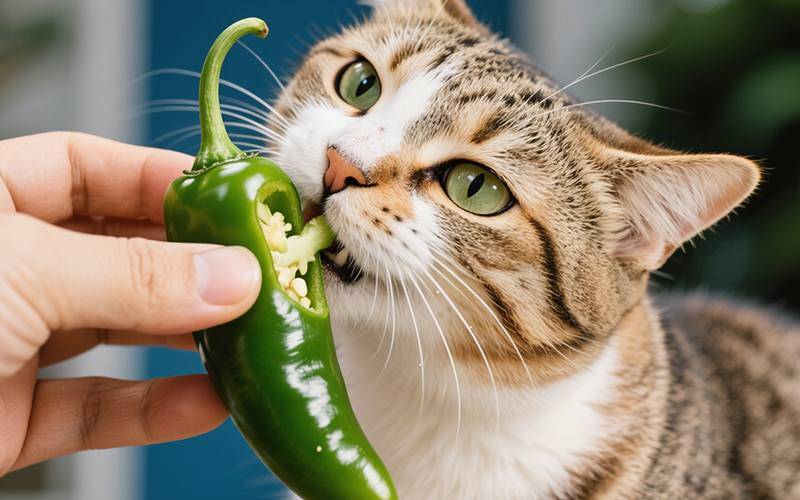
The Burning Question: Can Cats Eat Jalapenos? A Comprehensive Safety Guide
- 21 Apr 2025
Cool Temptation: Can Cats Eat Ice Cream Safely? The Vet-Backed Truth
- 21 Apr 2025
Frankly Dangerous: Can Cats Eat Hot Dogs? Vet Explains the Serious Risks
- 16 Apr 2025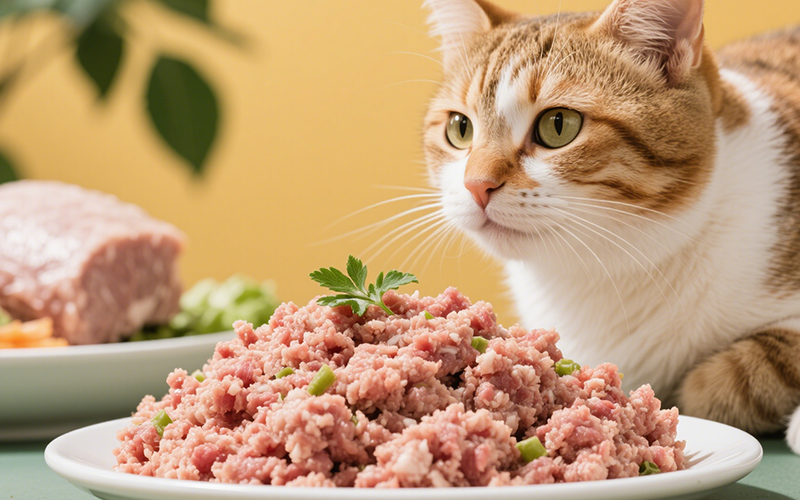
A Purrfect Protein? Can Cats Eat Ground Turkey Safely? (Vet-Reviewed Guide)
- 16 Apr 2025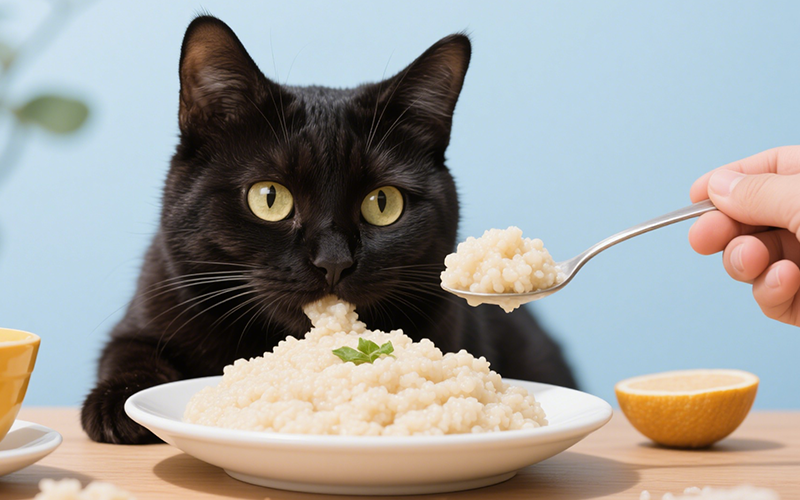
Gritty Situation: Can Cats Eat Grits Safely? Vet Explains the Risks
- 16 Apr 2025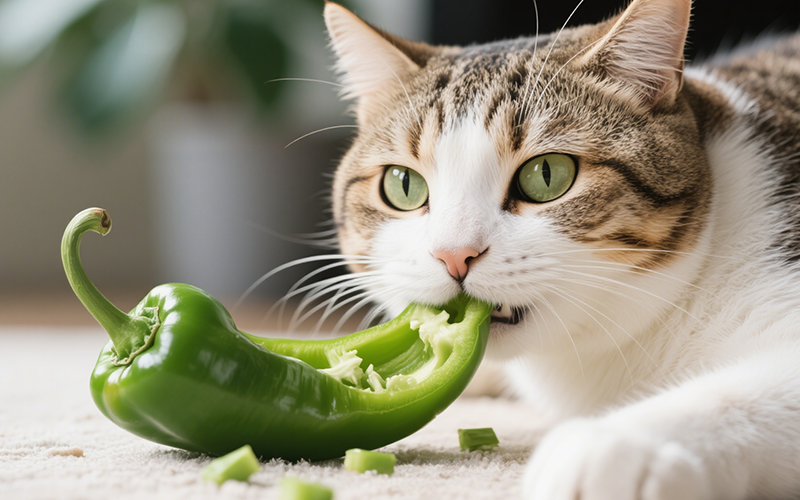
Crunchy Query: Can Cats Eat Green Peppers? A Vet-Reviewed Safety Analysis
- 16 Apr 2025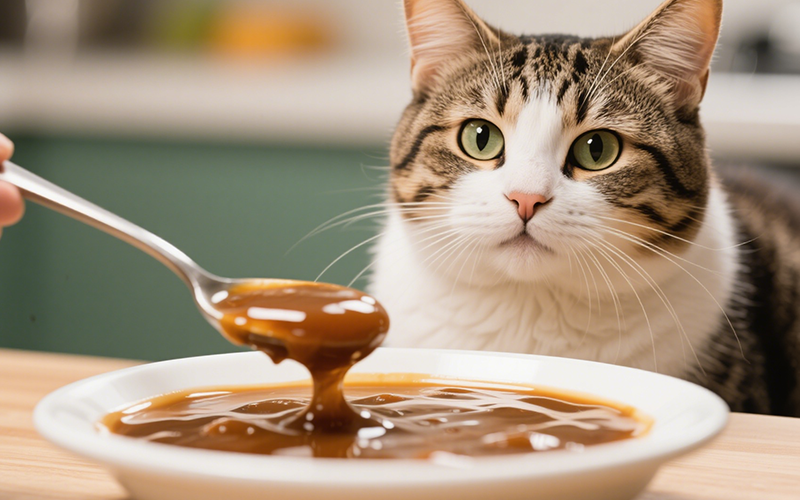
Gravy Danger Zone: Can Cats Eat Gravy Safely? (Vet-Reviewed Warning)
- 16 Apr 2025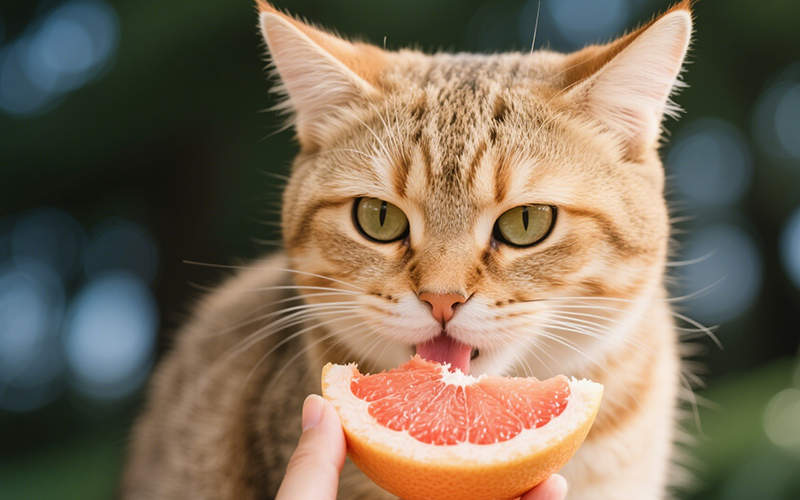
Toxic Temptation: Can Cats Eat Grapefruit? Vet Explains the Dangers
- 16 Apr 2025
Emergency Meal or Major Mistake? Can Cats Eat Dog Food For A Couple Days? (Vet Guide)
- 16 Apr 2025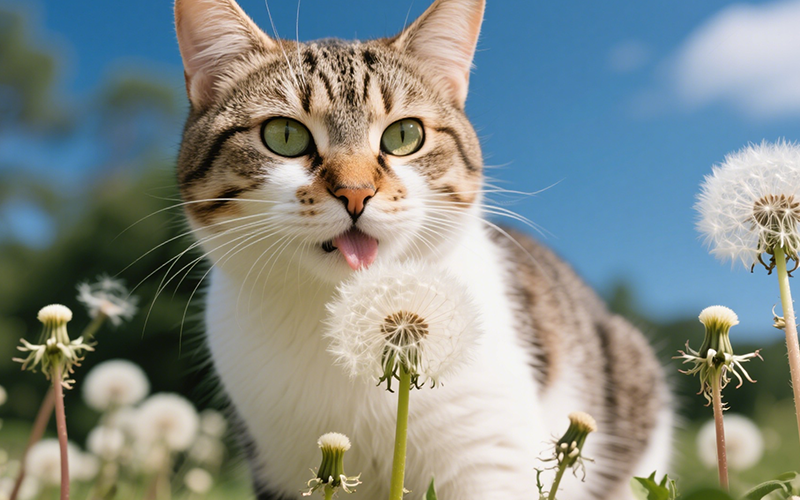
Dandelions & Felines: Can Cats Eat These Common Weeds Safely? Vet Explains
- 16 Apr 2025
